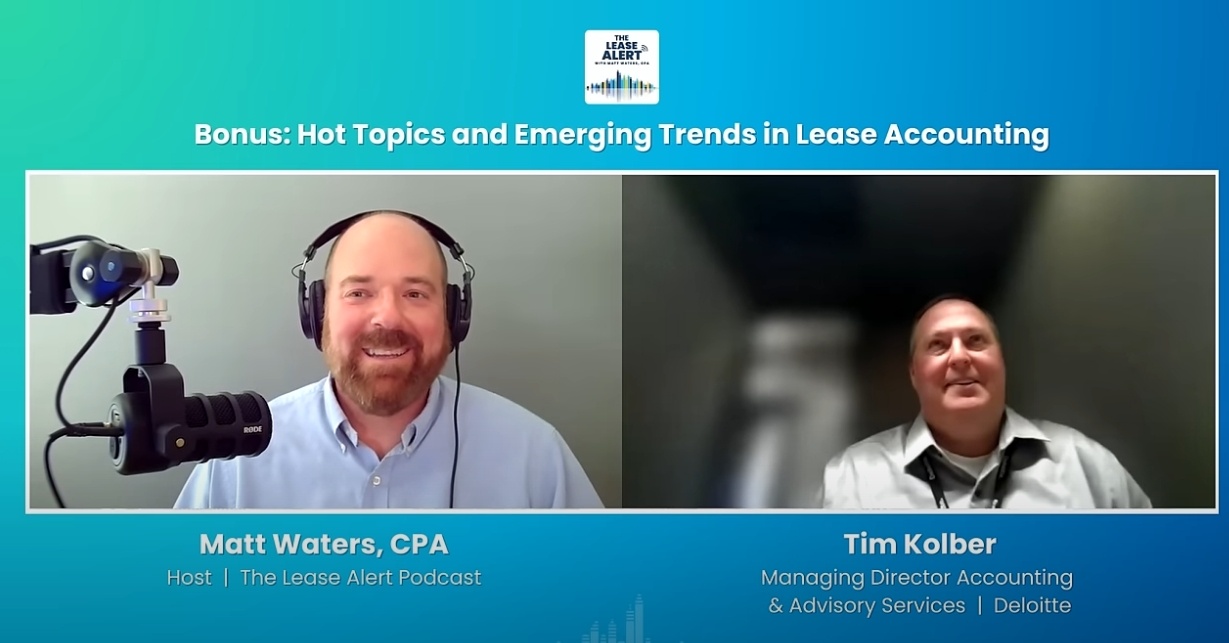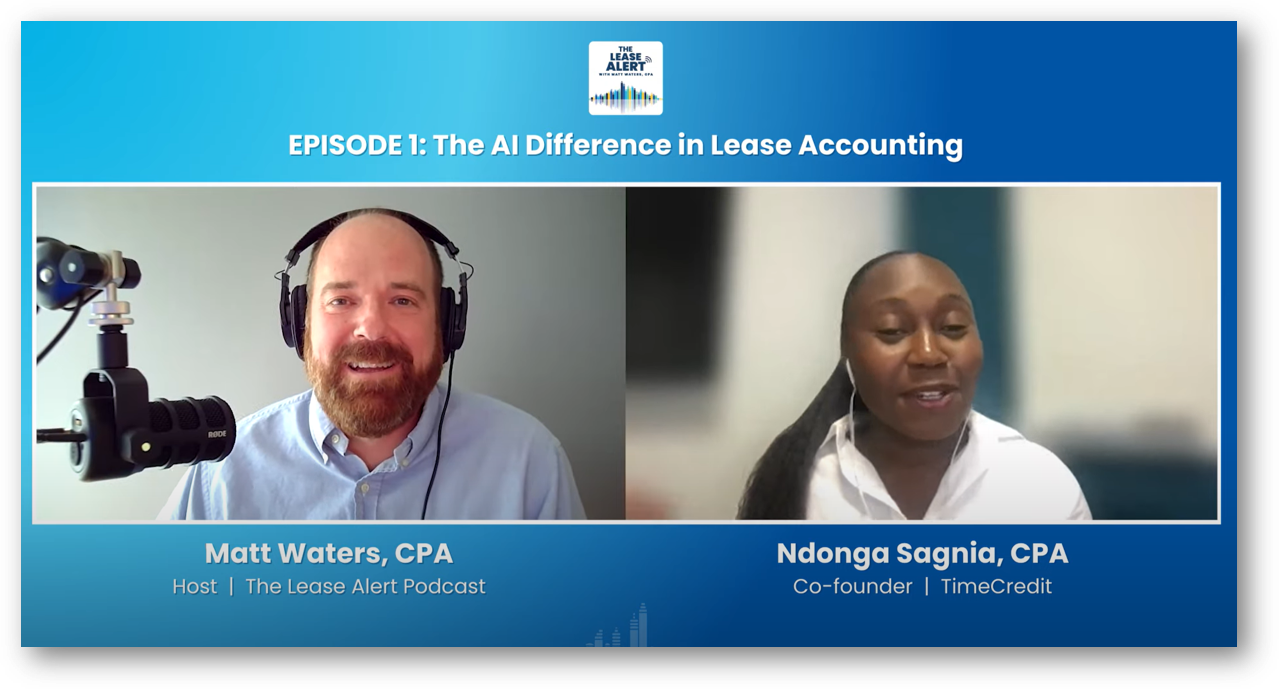Share this
by Matt Waters, CPA on May 20, 2025
How IFRS 16 Lease Accounting Practical Expedients Came to Be
Practical expedients are critical in driving the adoption of the IFRS 16 lease standard for lessees of property and equipment.
In short, they help simply the transition from the previous standard.
The International Accounting Standards Board (IASB) amended the new IFRS leases standard to provide lease accounting practical expedients in response to the major challenges reported associated with lease accounting compliance. The concerns reported by stakeholders were about two main issues.
First, there can be difficulty when defining standalone selling prices for lease and non-lease components that are not sold separately. Second, there is the issue of the significance of data regarding the separate components to users of the financial statements.
Options Available to Lessees
IFRS 16 calls for lessees to separate lease components from non-lease components, using only the lease components in calculating the lease liability and right of use asset. This is easy in the case of net leases, where non-lease components are invoiced separately.
In the case of gross leases and modified gross leases, where some or all of the non-lease components are included in rent, separation of components is still required, although it may be difficult. Lessees may apply a practical expedient to not separate the components.
This election is made by the class of underlying assets and must then be applied to all leases in the class. The expedient makes the management of leases easier, but it does result in higher liability and asset balances. Entities should therefore consider the impacts carefully before taking the expedient.
Required Criteria for IFRS 16 Accounting
Electing this practical expedient is a commitment. Any lessee that chooses the practical expedient for an asset class is required to apply it consistently to all eligible non-lease components in that class. In other words, a lessor cannot selectively apply this classification method.
An additional practical expedient allows lessees to apply the standard “to a portfolio of leases with similar characteristics if the entity reasonably expects that the effects on the financial statements … to the portfolio would not differ materially from … the individual leases within that portfolio”. This is similar to the permitted portfolio approach under ASC 842, except that IFRS 16 specifically refers to this as a practical expedient.
There are also a series of practical expedients to be selected at initial adoption of the IFRS 16 standard. In most cases, these are moot as the standard was initially adopted 1 January 2019, although some nations are adopting at a later date.
Most notable are elections to not reassess whether an agreement contains a lease, and to determine the initial value of the Right of Use Asset when a lease was previously classified as an operating lease.
Whether a business opts in or out of the practical expedient available for lease accounting compliance, choosing a proven lease accounting solution allows you to manage leases in the manner that best suits company practices and processes.
If you're interested in a comprehensive solution that keeps you audit-ready for any standard with advanced automation, reach out today for a demo and pricing from the team at CoStar Real Estate Manager.
Share this
- Lease Accounting Software (90)
- ASC 842 (83)
- Accounting Teams (53)
- Lease Administration Software (27)
- Retail Tenants (16)
- Commercial Real Estate (14)
- Lease Management (13)
- Real Estate Teams (10)
- ESG (8)
- Market Data and Analytics (8)
- Success Stories (8)
- News and Media Coverage (5)
- Transaction Management Software (2)
- frs 102 (2)
- Customer Success (1)
- Office Tenants (1)
- December 2025 (1)
- September 2025 (1)
- July 2025 (2)
- June 2025 (4)
- May 2025 (2)
- April 2025 (2)
- March 2025 (6)
- February 2025 (3)
- January 2025 (4)
- December 2024 (1)
- October 2024 (4)
- September 2024 (2)
- August 2024 (4)
- July 2024 (3)
- June 2024 (3)
- May 2024 (4)
- April 2024 (1)
- February 2024 (1)
- December 2023 (4)
- November 2023 (6)
- October 2023 (4)
- September 2023 (2)
- August 2023 (2)
- July 2023 (3)
- May 2023 (2)
- March 2023 (1)
- February 2023 (3)
- January 2023 (1)
- December 2022 (3)
- November 2022 (4)
- October 2022 (4)
- September 2022 (1)
- August 2022 (4)
- June 2022 (1)
- May 2022 (4)
- April 2022 (8)
- March 2022 (3)
- February 2022 (1)
- January 2022 (2)
- November 2021 (2)
- October 2021 (2)
- September 2021 (3)
- August 2021 (15)
- July 2021 (3)
- June 2021 (1)
- May 2021 (1)
- April 2021 (3)
- March 2021 (1)
- January 2021 (1)
- December 2020 (3)
- November 2020 (1)
- October 2020 (2)
- September 2020 (2)
- August 2020 (3)
- July 2020 (2)
- June 2020 (3)
- May 2020 (1)
- April 2020 (1)
- March 2020 (1)
- February 2020 (1)
- December 2019 (1)
- October 2019 (1)
- September 2019 (2)
- August 2019 (3)
- July 2019 (2)
- April 2019 (69)
- October 2018 (1)
- August 2018 (1)
- July 2018 (1)
- June 2018 (1)
- May 2018 (1)
- April 2018 (2)
- March 2018 (3)
- February 2018 (2)
- December 2017 (1)
- August 2017 (3)
- June 2017 (2)
- May 2017 (2)
- April 2017 (1)
- March 2017 (2)
- January 2017 (2)
- November 2016 (2)
- July 2016 (1)
- June 2016 (1)
- July 2015 (1)
- March 2015 (1)
- June 2014 (1)
- April 2014 (11)
- October 2011 (1)
You May Also Like
These Related Stories

FRS 102 Practical Expedients and How to Manage Them

Hot Topics & Emerging Trends in Lease Accounting




